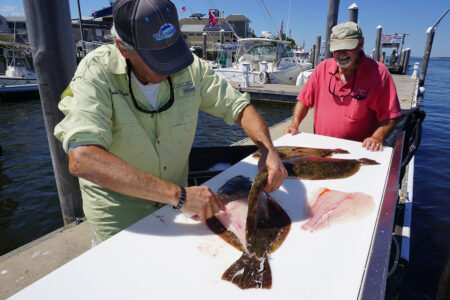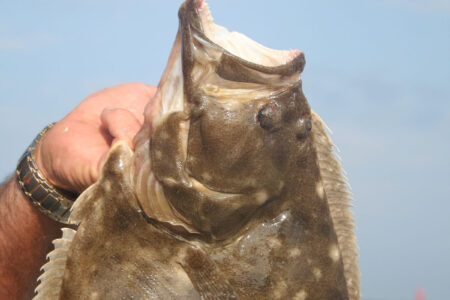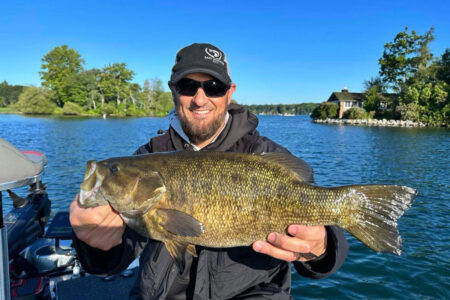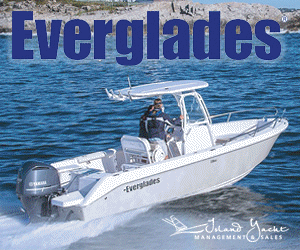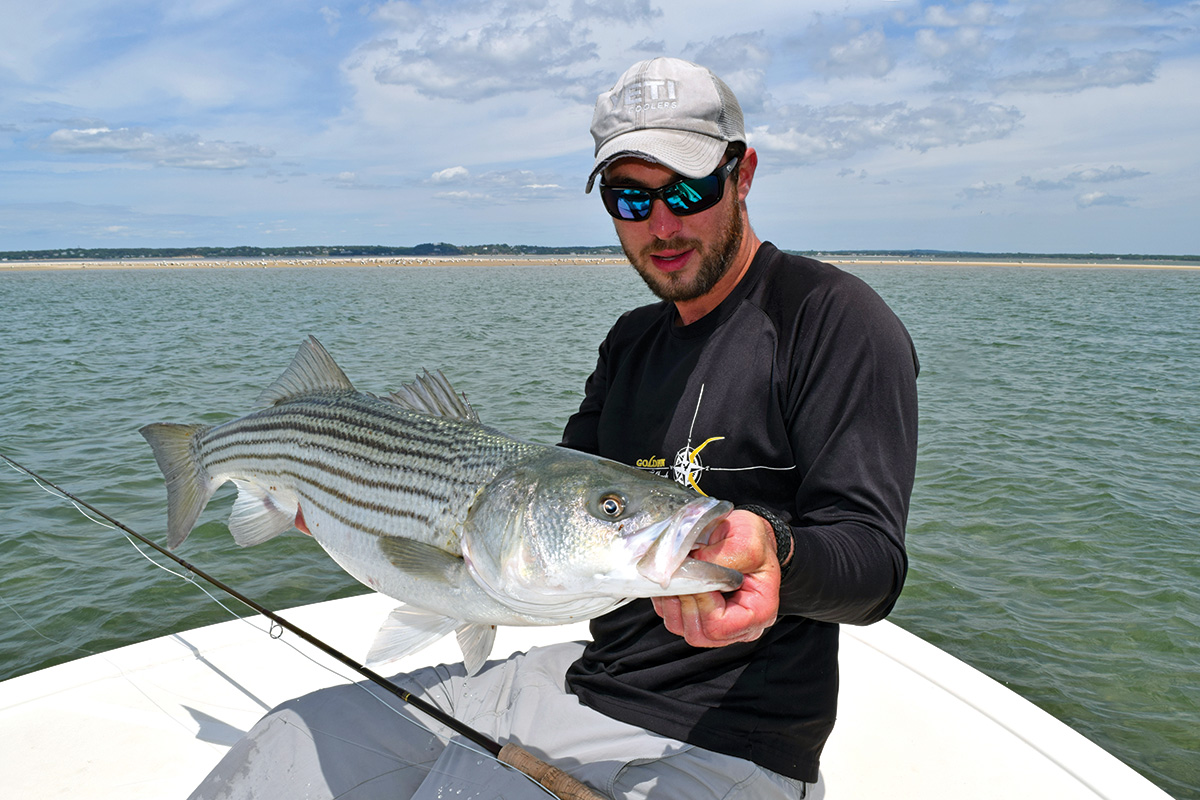
The end of every fishing season is emotionally tumultuous and doesn’t seem to get any easier with age. The excitement of the fall run, the routine of living life from tide to tide, moon phase to moon phase and reacting to wind direction all comes to a screeching halt as the temperatures drop and the fish move south. The 2017 striped bass season was an interesting one for both surf and boat anglers and raised many questions about fish behavior, our environment and the health of the striped bass population. Traditional migratory patterns and behavior may be changing for many of the inshore species we chase but none seem to be more significant than that of the striped bass.
Successful surf fishermen by nature are adaptive. We need to be flexible and change our tactics accordingly to tide, wind direction, moon phase, water conditions, and bait abundance. So as fish behavior starts to change we need to understand what’s causing the change and adapt to be successful. Surf fishermen on Long Island experienced another challenging season in 2017 with the number of “keeper” size striped bass ranging from scarce to non-existent in many of the most popular surf fishing locations. I would like to propose a few explanations of why this happened and what we may expect in the future, keeping in mind that striped bass stocks overall are not as healthy as they should be.
Mega Schools
Mega Schools form when striped bass populations drop to a point that fish no longer need to spread out to compete for food because there’s more than enough bait to sustain these large schools of fish. When stocks are healthier, such as in 2006 we would have fish migrate up the coast and push into all the bays and estuaries in search of food, but as the population of larger fish decline they appear to be forming large, or Mega schools, that migrate together and densely populate finite areas when they reach their summering grounds. When this occurs it pulls all the fish that would normally populate the shorelines as singles and doubles or smaller pods of fish that work structure along the beach or in our bays into the Mega School. A great example of Mega Schools is on Cape Cod where over the past decade many of the larger fish that would populate the East End of Long Island seem to be getting pulled up to colder water that’s full of large baits like mackerel, herring and sand eels. As a result, these Mega Schools created areas of exceptional fishing. However, the formation of Mega Schools also creates exceptionally poor fishing in areas that historically had excellent fishing. This could be an example of why the fishing in the Cape Cod Canal, Block Island, Newport and the Montauk rips showed excellent fishing while other historically famous surf locations were devoid of fish. Examples of Mega Schools on Long Island were the spring population in Jamaica Bay that stayed on the bunker schools and provided exceptional fishing, and the body of big bass that stayed in the Montauk rips all summer. While this was great for J-Bay and Montauk (boats) during those times, the rest of the Island was mostly devoid of quality bass, particularly bays where normally there would be resident populations of fish.
Temperature
There’s no question that we’ve experienced some of the warmest years in decades and we’ve seen water temperatures rise in our bays and along the South Side of Montauk. It’s not unusual to be in a 3-5mm wetsuit in the middle of June when during the strongest years in the surf along Montauk’s South side the water was much cooler. Temperature is one of the most significant factors when trying to find and catch striped bass and has a direct impact on their behavior. Cold water avoidance for striped bass is low to mid 40 degrees while the high temperature avoidance is estimated at 75 degrees. For anyone out early in the season in search of the first striped bass, a digital thermometer is important, and I find that my first fish are caught when surface temps exceed 42 degrees, and when late July comes and temperatures start to climb into the mid to high 70s in our inland bays the largest fish are first to leave. There’s evidence that larger fish need and seek colder water and in turn higher dissolved oxygen levels and it can affect their location and feeding behavior. Temperature directly affects the amount of dissolved oxygen that’s available for the fish to breathe. As the water temperature increases the amount of dissolved oxygen (DO) decreases. I think it’s fair to say that we’ve seen our fish migrate further north to colder water over the past decade. The result is that as the population drops, Mega Schools are formed and the fish we normally have populating our shorelines are “dragged” along to feed on large schools of herring and mackerel in colder and better oxygenated water.
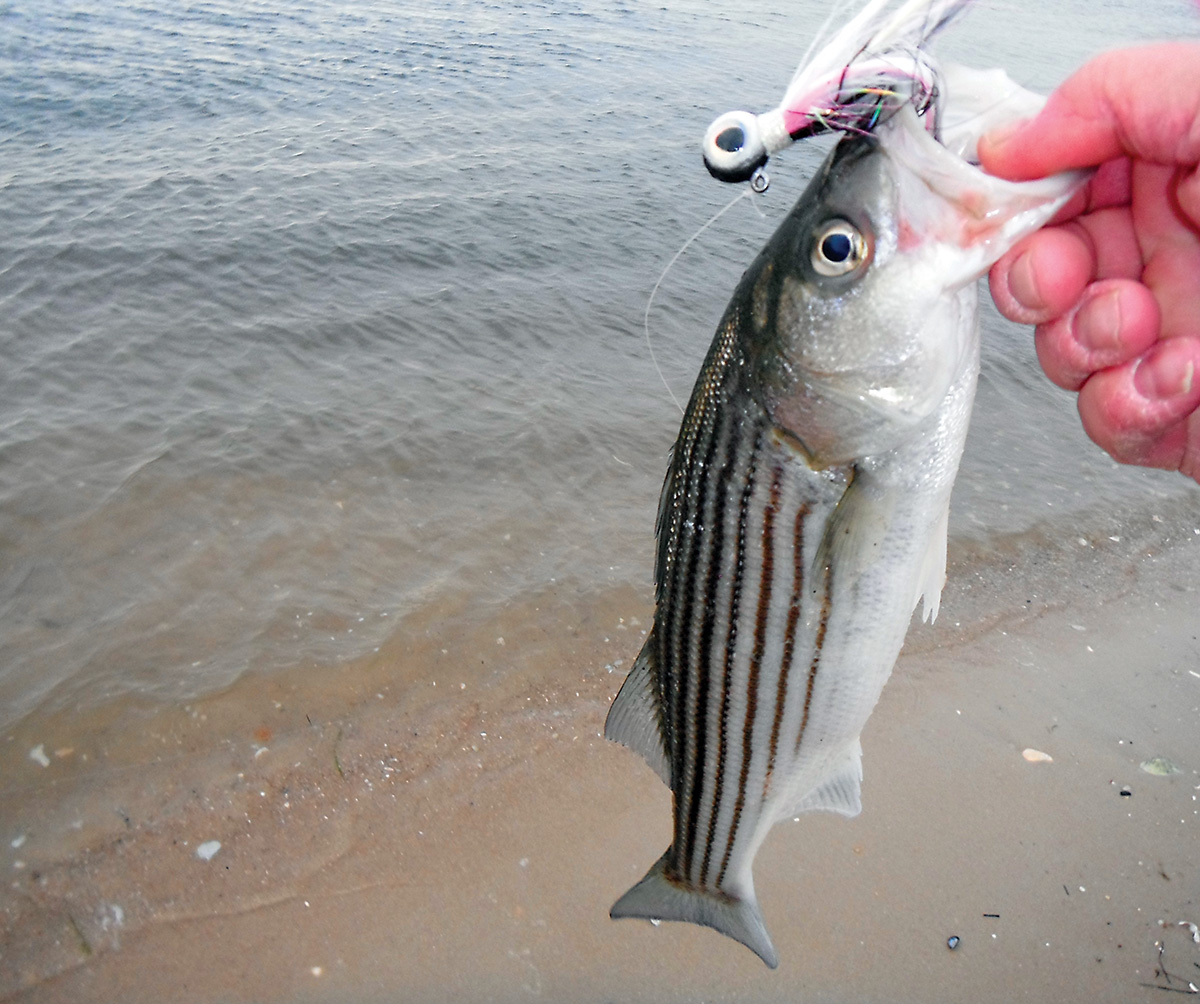
Our spring run has been better than the fall run as the fish push north moving along the leading edge of warm water, whereas the fall run seems to suffer from warmer water that lasts late into the fall so that there is less urgency for the fish to migrate south. Anyone who has been successful fishing our back bays knows that when the water reaches the mid 70s all the big fish have moved out in search of colder water. Over the past three decades I have fished Peconic Bay and have watched both the water temperature increase and the quality of the water decrease causing a shorter window to fish each year. In the mid to late 1990s you could find quality bass roaming the shorelines of both Shinnecock and Peconic Bays into early August. More recently, as water temps climb and algae blooms increase in size and frequency, the fish depart the bays earlier and earlier. As the population increases on Eastern Long Island we all have a responsibility to reduce the amount of fertilizers we use on our lawns and on a larger scale, the move towards more efficient cesspools to reduce the nitrogen and phosphates that end up in our inland waters is crucial to having a healthy inshore fishery. We need to make sure that the “green lawn” doesn’t spell death to our bays and need to insure that we’re protecting the places we love to spend time fishing with family and friends.
Bait
After temperature, the abundance of bait is the next most important factor in locating fish and keeping them in an area. However, it’s the type of bait and in many cases the addition of other predators that will determine if fish will be along the beach. The tremendous amount of adult bunker that we’ve had in Long Island Sound, Block Island Sound and along the South Shore could be one of the biggest factors on why we don’t have more fish along the beach. The huge populations of adult bunker that are found a few hundred yards to a few miles off the beach are easy pickings and are a readily available food source that could be holding the fish offshore. One of the reasons that the spring fishery has been more productive inshore than the fall run could be because of the lack of bait, forcing the fish to push into inshore areas in search of food. There was nothing to push the schools of bunker onto the beach in 2017 and since we lacked the schools of giant bluefish that would harass these schools and drive them into the shallows they were able to stay offshore for most of the year. Sand eels and spearing are a key to inshore success and we lacked both for most of the year while we did have a decent run of anchovies that played a big role in the fall run, but it was mainly the tremendous schools of albies and schoolie bass that took advantage of these. The bait source that was missing along our beaches last year was the sand eel, one of the key inshore baitfish that keep fish along the shoreline and can result in prolonged stretches of good fishing.
Predators
The lack of bluefish is considered one of the key factors that affected the lack of bait against the beach in Montauk and along the South Shore this year, and many feel that they play a key role in forcing bait schools into the surf line. There’s no question that the number of sharks that have been feeding in inshore waters off of Long Island’s South Shore has increased dramatically and it’s evidenced by the videos and catches of thresher sharks, brown sharks, and even makos making it close enough to target from shore. I experienced a close encounter for the first time in late August on Montauk’s North Side when working Jones Reef in my wetsuit and “drifting the North Side.” When I reached Jones Reef, I noticed a big swirl in front of me and I questioned myself, thinking “I didn’t know there was a rock there.” As I bounced my way over with each wave going over my head, I kept sticking my foot out trying to get on the “rock” that would swirl again a few feet out and to my right. I had to swim now, while trying to get my spikes on the “rock” when I realized that what was causing the disturbance wasn’t a rock! The water was now over my head and as I started side stroking back towards shore I saw the tip of the tail fin of a shark moving 20 feet in front of me and parallel to the beach. The shark never made an aggressive move towards me but regardless it was a “pucker” moment. Are these sharks pushing the striped bass further off the beach? The explosion of the seal population on Cape Cod and their growing numbers in Montauk could very well be affecting striped bass behavior, causing them to move into deeper water to avoid being predated on. Could it be that the fish on the Cape that spend much of their time 1 to 5 miles off the beach in 100 or more feet of water to avoid getting predated on by the seals get comfortable living and feeding in the deep and as they migrate down the coast, stay deep and avoid the shorelines?
Water Quality
Water quality has been a big problem on Long Island and as more land becomes developed, more green lawns are planted, more golf courses fertilized, and more home septic systems added, more nitrogen and phosphorus and other nutrients will enter our bays and inshore waters. As water temps increase, the added nutrients contribute to algae blooms that cause the water to turn green reducing the amount of light that penetrates down to photosynthetic grasses and marine plants, causing most to die off. Algae is an important part of our eco system but algae blooms that are driven by increased nutrients and water temps result in very low oxygen levels in many areas of the bay and become hypoxic, lacking the dissolved oxygen the larger fish need to thrive. The effect of increased algae is an increase in water temperatures that just helps drive this process. There’s no question it affects the movement of fish in Great South, Peconic and Shinnecock bays. Although anecdotal, I have sight fished Peconic Bay for the last three decades. The water quality has declined over the past decade, and the decline has accelerated over the past eight years. Less than a decade ago, you could count on 40-inch fish swimming the flats until early August when the temperatures would rise and the fish would exit the bays looking for colder, more oxygenated water. Today it’s rare to see fish in Great Peconic Bay past July 4, and the fish that do remain are small 16- to 20-inch fish that can handle lower dissolved oxygen levels.
It’s not all doom and gloom because we have some exciting fishing to look forward to as the 2011 and 2015 Chesapeake Bay spawning year classes and two strong Hudson River year classes start to populate our region. The 2011 year class came out in force last year and should have many pushing keeper size or better in 2018, making them ideal targets for light tackle. So scale back your tackle, pinch your barbs and go have some fun. If we take care of these fish by managing them conservatively, we should have some very good fishing to look forward to.
| North Fork Effect |
|---|
| For the past four years we’ve experienced strong Nor’easters that dominate the weather on Eastern Long Island and many of these occur the first week of October followed by another a week or so later. This could be a reason why we’ve experienced excellent fishing in the Eastern portion of Long Island Sound as many of the migrating fish dropping down from Rhode Island get pushed into Long Island Sound. As the weather moderates the fish settle into a routine and find strong rips and a tremendous amount of bait and stay put for a few weeks. In the past few years, fish that would otherwise be in Montauk have spent much of the fall in the Eastern portion of Long Island Sound. When I get reports that Pt. Judith and Watch Hill Rhode Island are covered up with fish with an approaching Nor’easter, I know where the fish are going to be found after the storm! |
